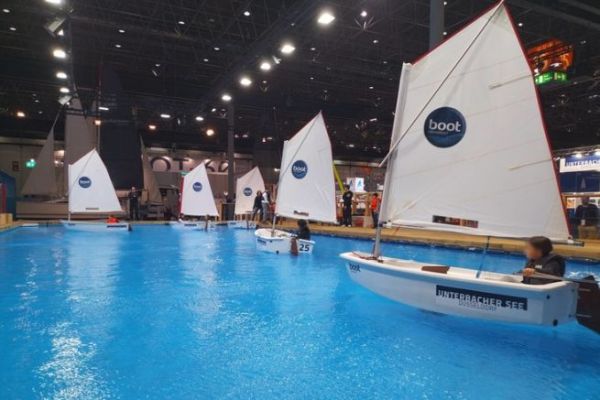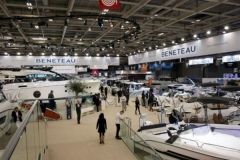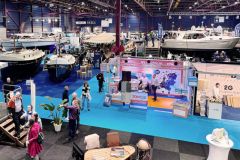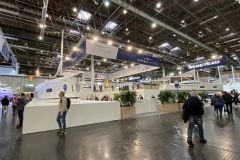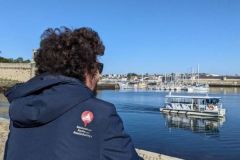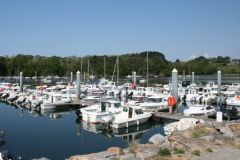Construction fever and vast aisles
A visit to Boot Düsseldorf is always rich in insights into the European and global marine industry. As the largest boat show on the Old Continent, this early-year event has no shortage of indicators for gauging the state of the yachting market. Where the sunshine of the autumn afloat shows always invites optimism, the austerity of the Messe Düsseldorf halls prompts realism. The slowdown in boat sales is no longer a taboo subject for any of the people we met, with some conceding that sales of small boats have virtually come to a halt. Some builders are slowing down their factories.
Signs of the times, the largest indoor boat show still boasts 16 halls, but the size of the aisles, the number of rest areas and the number of stands for federations and associations all point to a smaller number of exhibitors. The absence of even the smallest liveaboard catamaran, while explainable in logistical terms, raises questions, even though the sector is one of the fastest-growing in the nautical world.
Reasons to stay the course
However, all is not doom and gloom for the yachting industry as it leaves Düsseldorf. New products, though fewer in number, did attract visitors. Patience was required to board the new Hallberg Rassy or the latest Sun Odyssey, a sign of the interest shown by visitors.
Yacht sales remained on target, beyond some expectations, with the aid schemes put in place by the major shipyards to avoid overstocking making it possible to sell even small units. While political and economic uncertainties continue to cause concern, shipyards still see short-term opportunities.
There was also hope for the longer-term future of the industry. EBI's Emerging Industry Leaders conference put the spotlight on yachting's next generation. Between concern and reassurance, yachting is charting its course for 2024.

